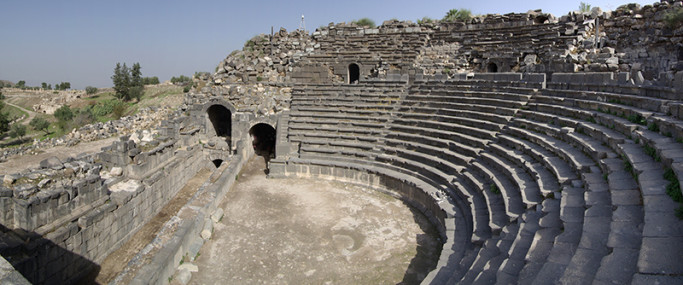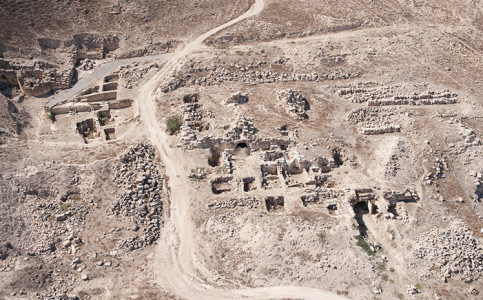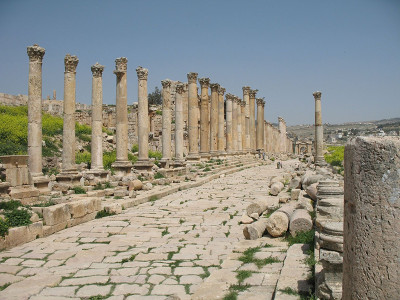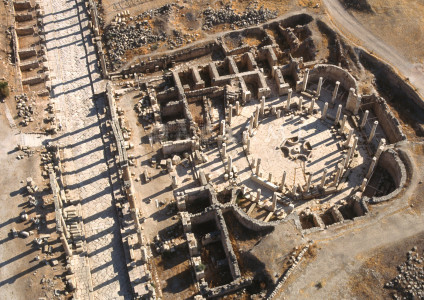
Doing the research for The Cats of Rekem was a long and fascinating process. Perhaps the most surprising part of it was discovering how little we really know about those first days after Paul’s vision on the Damascus road. Here are the only biblical verses (from The New English translation) that describe those days:
Acts 9:19-25–[immediately after his conversion] “He spent some time with the disciples in Damascus. Soon he was proclaiming Jesus publicly in the synagogues. ‘This,’ he said, ‘is the Son of God.’ All who heard were astounded. ‘Is not this the man,’ they said, ‘who was in Jerusalem trying to destroy those who invoke this name? Did he not come here for the sole purpose of arresting them and taking them to the chief priests?’ But Saul grew more and more forceful and silenced the Jews of Damascus with his cogent proofs that Jesus was the Messiah. As the days mounted up, the Jews hatched a plot against his life; but their plans became known to Saul. They kept close watch on the city gates day and night so that they might murder him; but his converts took him one night and let him down by the wall, lowering him in a basket.”
2 Corinthians 11:32-33–“When I was in Damascus, the commissioner of King Aretas kept the city under observation so as to have me arrested; and I was let down in a basket through a window in the wall, and so escaped his clutches.”
Galatians 1:16-20–“When that happened [his conversion], without consulting any human being, without going up to Jerusalem to see those who were apostles before me, I went off at once to Arabia, and afterwards returned to Damascus. Three years later I did go up to Jerusalem to get to know Cephas. I stayed with him for a fortnight, without seeing any other of the apostles, except James, the Lord’s brother. What I write is plain truth; before God I am not lying.”
In the Acts account, in the paragraph following the one above describing Paul’s escape from Damascus, Luke speaks of Paul’s trip to Jerusalem, where he met all the disciples. In light of Paul’s own words in his letter to the Galatians above, I believe Luke must have been describing a later trip to Jerusalem. Paul states clearly that he went immediately to Arabia from Damascus. The three passages above, then, are our only sources for Paul’s departure from Damascus.

So what do we know about Paul’s night at the wall? Let’s look first at the wall itself.
The biblical text in Galatians uses the word θυρίς, thuris, which means a small opening or window. The text in Acts merely says Paul was lowered through the wall; no opening is specified. So, perhaps the word need not be translated “window.”
I had some difficulty imagining a window in the middle of a Decapolis city wall, so I started researching 1st C CE city walls in Roman Syria, specifically at Damascus. I discovered that not much more than a few foundation stones are visible in Damascus, underneath later walls dating mostly to the Middle Ages. But I did discover that Damascus was transformed by its Seleucid (Greek) conquerors somewhere around the 3rd C BCE. The city was then rebuilt along N/S and E/W axes, in much the same pattern that remains today. The city walls were rebuilt as well. When the Romans took over Damascus in the mid-1st C BCE, they set to work rebuilding much of the city again, adding their typical monumental touches. They also strengthened the walls and extended them outward to include an area larger than the earlier Greek walls. The Roman walls stood approximately where the walls stand today.
In the pictures below you can see a reconstruction of the east gate in the Roman wall surrounding the Decapolis city of Hippos, and a model of the Decapolis city of Scythopolis (Bet She’an), with the city wall around it. Notice in both that the only openings/windows are in the actual gate towers, which are guard quarters. The walls themselves are high and smooth, without openings, although the spaces in the crenelations might be called “openings.”
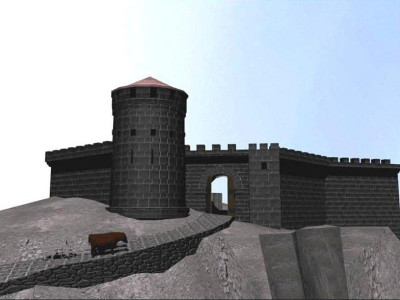
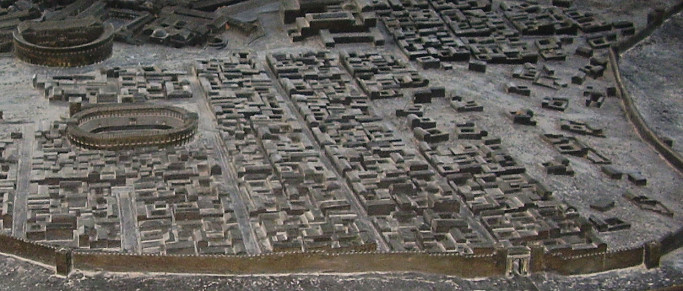
But what exactly did Roman walls look like? How were they constructed? I discovered that there is an amazing amount of research dedicated to the study of Roman walls. As a result we know quite a lot about their internal structure and appearance. By the time of the Roman building projects in Damascus (which were approaching their peak when Paul visited there), Roman walls were often being constructed with a rubble core faced with concrete and tiles. The huge quarried stones of earlier walls were being used only for the foundations.

Hadrian’s Wall is a good example of this style of wall, and has survived well enough to be studied thoroughly. The pictures below are artist’s reconstructions of Hadrian’s Wall.
This rubble-core style of wall-building is described in The Cats of Rekem. Such walls would lend themselves even less easily than ashlar walls to openings/windows, even if windows were considered desirable in defensive walls. Nowhere did I find Roman walls like the early ones pictured in childhood Bible studies, where city walls were made up of the walls of houses haphazardly connected together. So, how could there be an “opening” in the Damascus wall, “through” which Paul might be lowered in a basket? I decided that a collapsed rubble wall might serve the purpose: perhaps poorly made, weakened by earthquake, attack, or collapse of subterranean chamber–any of those would do. The result would be a breach in the wall that might be described as an opening. There you have the basis of Paul’s adventure as I described it in The Cats of Rekem.
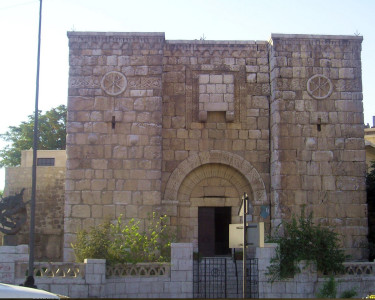
I also moved Paul’s escape route to a different part of the wall from the one that Church tradition identifies, in the photo above. I agree with Ross Burns, in his excellent book, Damascus: A History, that a location right over a Roman gate–and in the Jewish quarter, was an unlikely place for a successful escape. You can see that the traditional gate above, Bab Kisan, is #3 on the map of Old Damascus as it is known today (above). That same gate is on the map of Roman Damascus (also above), and located on the south side, near the eastern corner: at the major market thoroughfare and adjoining the Jewish quarter. Paul’s escape in The Cats of Rekem is marked by the words “broken wall,” just north of the gate under construction on the eastern wall.


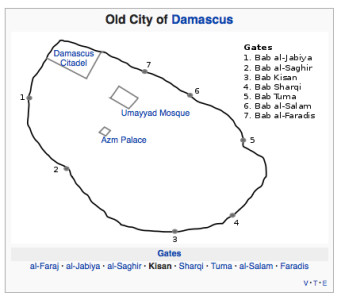
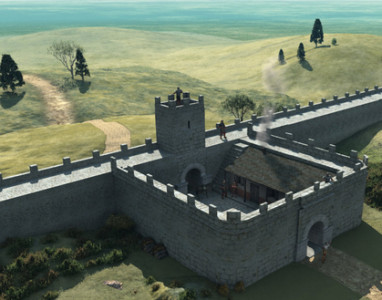
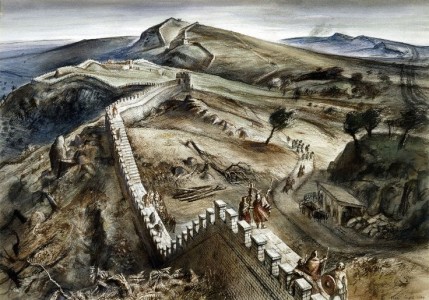

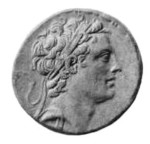
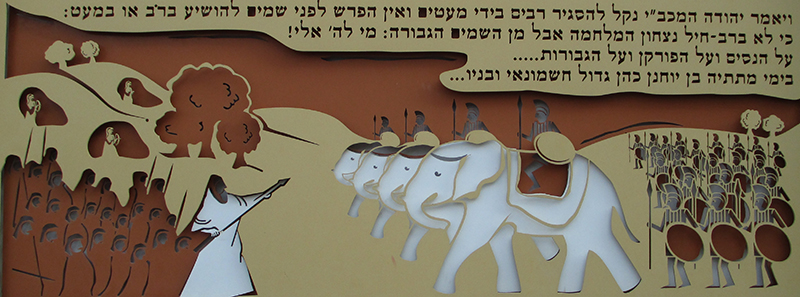
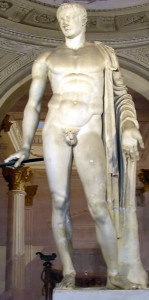
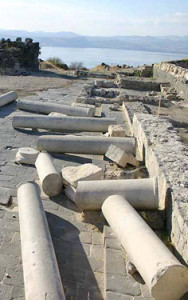
 HIPPOS sat on a high ridge overlooking the eastern side of Sea of Galilee, surrounded on all sides by steep inclines and high fortifications. One thin shoulder of rock approached the main gate on the east, where a fortified road connected the city to the eastern hills as well as indirectly to the sea. Of all the Decapolis cities, Hippos is said to have harbored the greatest antagonism toward Israel for her part in the Hasmonaean wars.
HIPPOS sat on a high ridge overlooking the eastern side of Sea of Galilee, surrounded on all sides by steep inclines and high fortifications. One thin shoulder of rock approached the main gate on the east, where a fortified road connected the city to the eastern hills as well as indirectly to the sea. Of all the Decapolis cities, Hippos is said to have harbored the greatest antagonism toward Israel for her part in the Hasmonaean wars.

